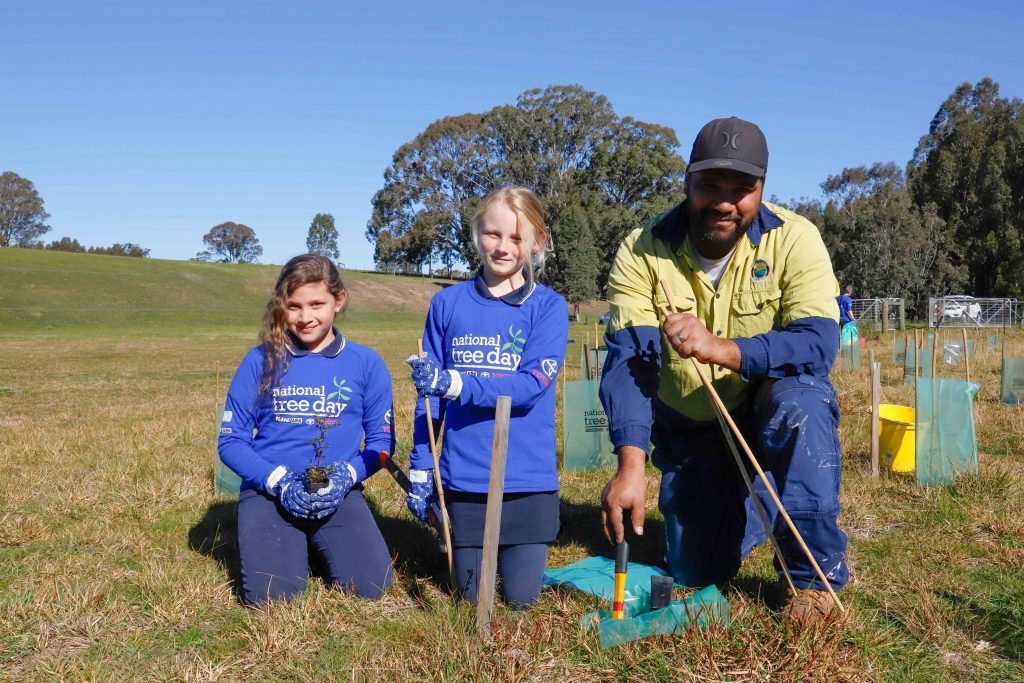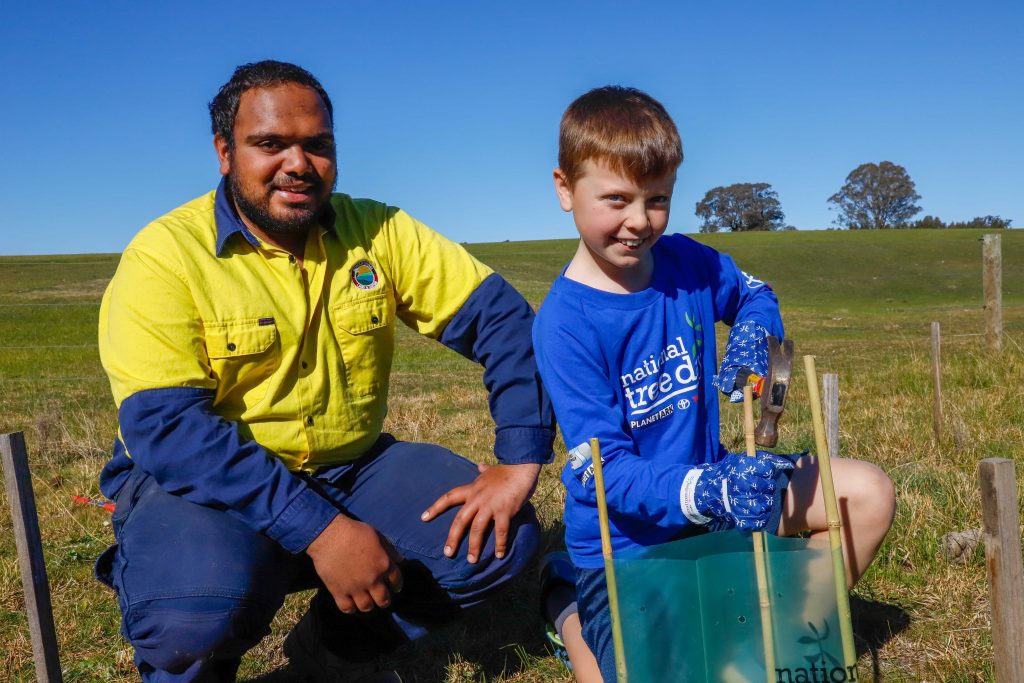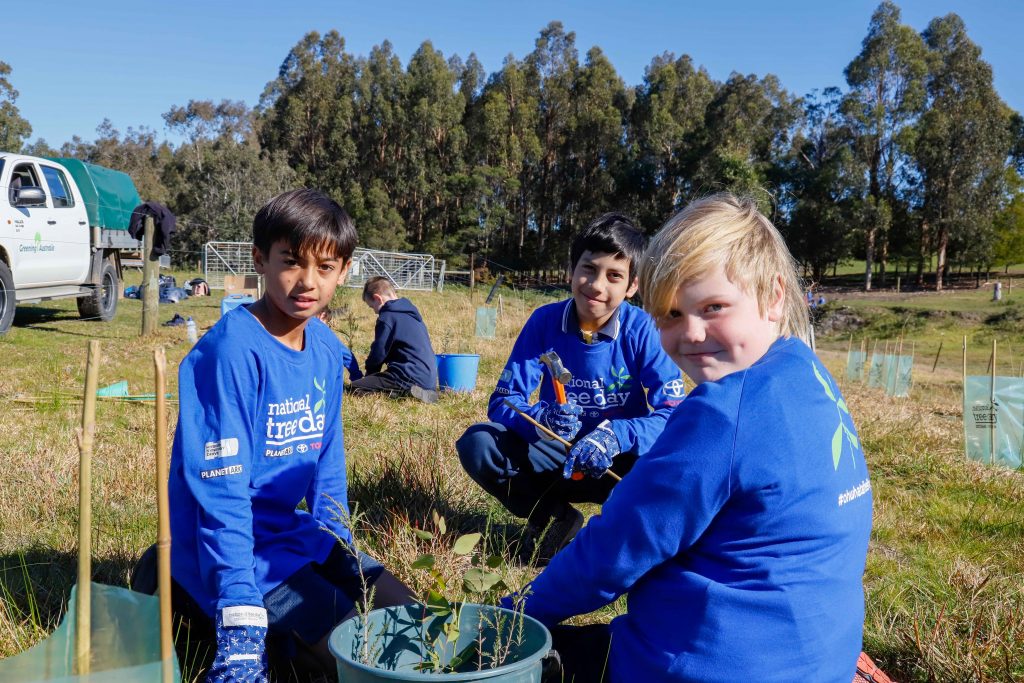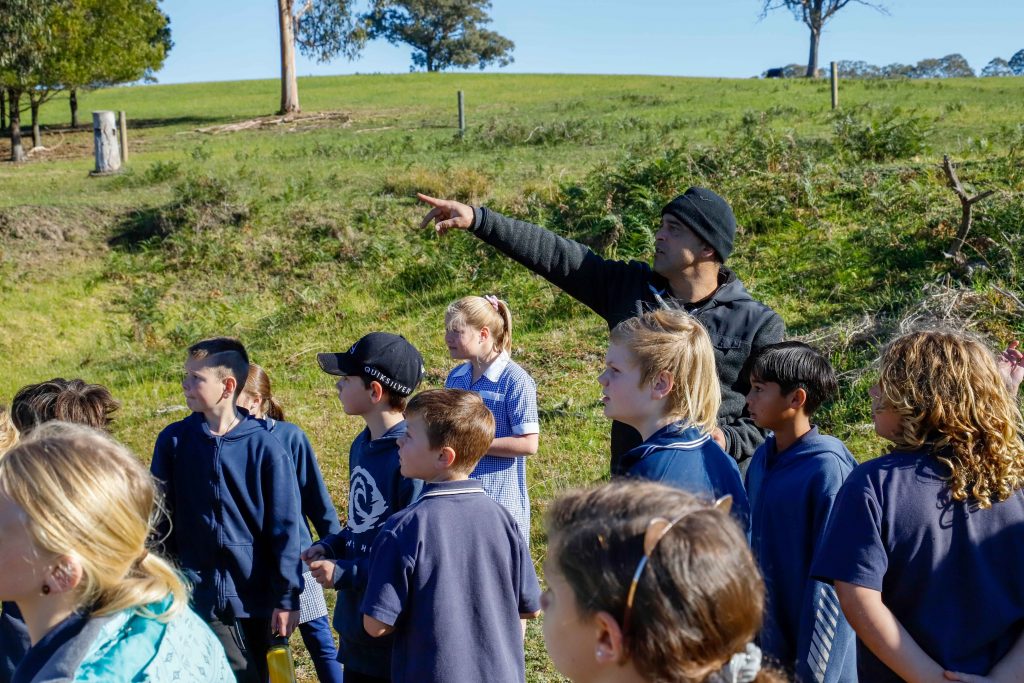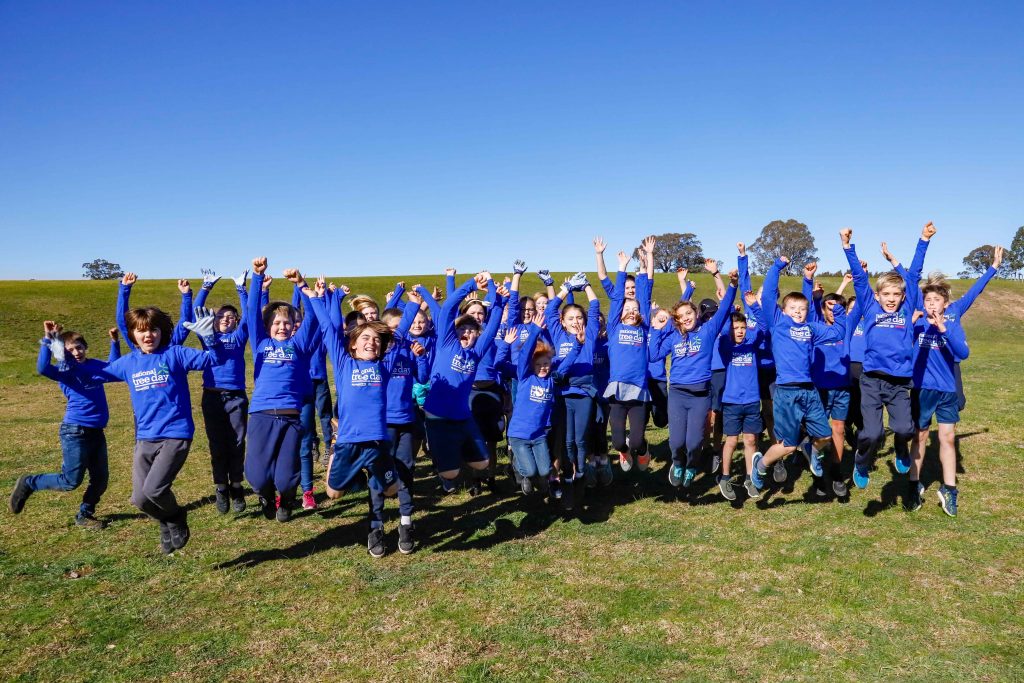
The gloves were on and enthusiasm was high as students from Lindenow Primary School celebrated National Tree Day last week with a visit to the upper reaches of Skull Creek.
Working with the GLaWAC NRM crew, the grade 4’s & 5’s planted over 500 native seedlings in an effort to help restore the 10 km stretch of wetlands near Lindenow.
With the new plants in the ground, the kids learned about the cultural significance of the site with Uncle Alfie Hudson and were excited to find a baby Eastern long neck turtle hatchling with the team from Bug Blitz.
The event was organised by Greening Australia (GA) in collaboration with the East Gippsland Catchment Management Authority with funding provided by the Victorian State Governments ‘Our Catchment, Our Communities’ plan.
Martin Potts, from GA appreciates the significance of being able to foster relationships with the environment from an early age. “These students are learning about the biodiversity and the cultural history of their own backyard. It’s important to give kids an opportunity to do their little bit, to be custodians and bring a little bit of wilderness back.” he said.
Grade four teacher Kate McNab appreciates the connection that these excursions bring to the biological studies being taught in the classroom. “It’s a great environmental activity for the kids to be out amongst the trees and animals that we’re learning about and great to be able to spend some time with Alfie learning about the culture of the area. The baby turtle was just the icing on the cake“
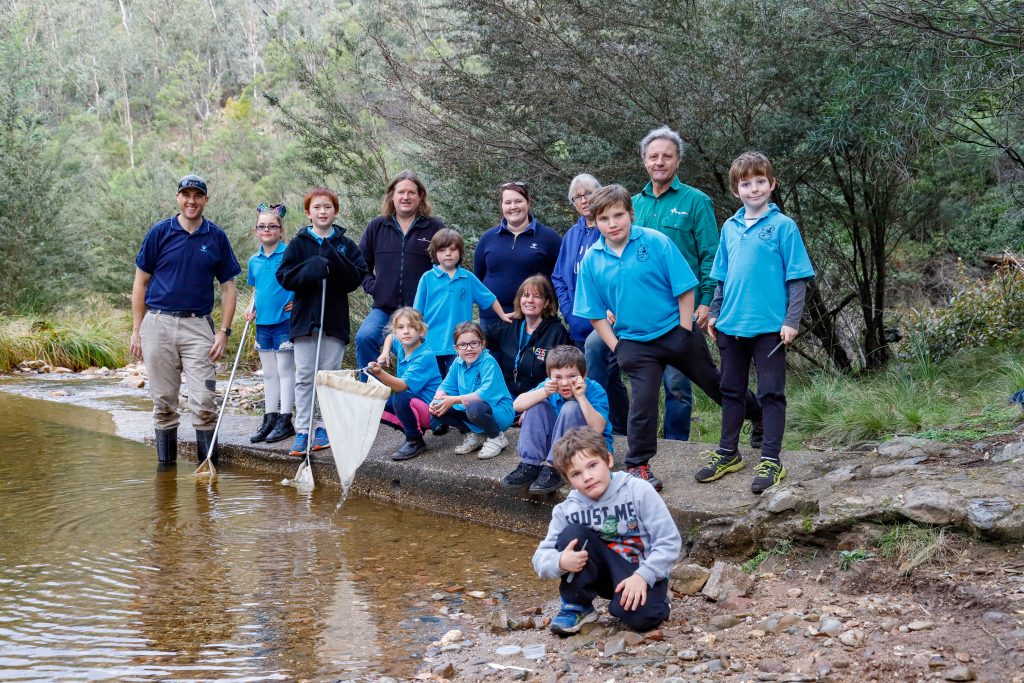
Clifton Creek Primary School students travelled to the Nicholson River at Deptford to learn about the history of the area with members of the East Gippsland Catchment Management Authority (EGCMA), Greening Australia and Bug Blitz.
Walking downstream, students visited the old diversion tunnel built next to the river in a quest to find gold and had a hard time believing that the area once had a population of 300 people and it’s own local school.
With nets in hand, they were able to explore the tiny critters that live in and around the river and better understand what a healthy waterway looks like. They even found a Gypsy Jumping spider, which is common in NSW and Queensland but never before recorded in East Gippsland.
“It’s great for the kids to explore the local community”, said Sue Paul, Principal of Clifton Creek Primary. “The kids love a nature walk and are currently studying habitat and endangered species so it’s important to be able to connect what we’re learning in the classroom with what’s happening out in the world.”

Waders had nets at the ready last week as community members participated in Waterbug ID training sessions as part of the National Waterbug Blitz at Swifts Creek and the Heyfield Wetlands.
Presented by leading waterbug expert John Gooderham, the events taught interested locals the tools to investigate how healthy their waterways and wetlands are by exploring and identifying what bugs live in them.
The citizen science project encourages individuals and local groups to explore their local freshwater creeks, rivers, wetlands and dams to learn about the world of waterbugs, contribute to improving waterway health and share their knowledge with their communities.
Participants were keen to get outdoors and identify some of the more fragile critters living in our waterways and proudly earned a yellow ‘identification’ bandana for their efforts.
The event was supported by the East Gippsland and West Gippsland Catchment Management Authorities to improve the health of waterways and catchments throughout Gippsland.

